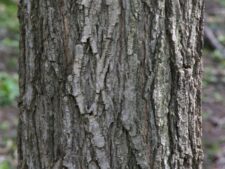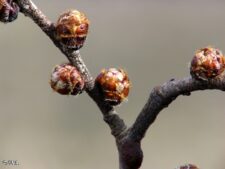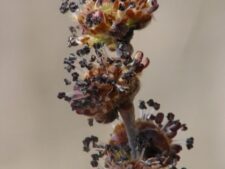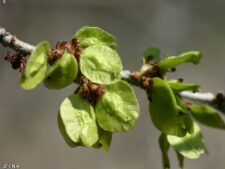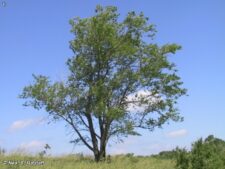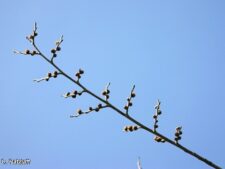
This medium-sized tree, a native of East Asia, was introduced here in the 19th Century. Most were planted, but many have escaped. The bark is gray with deep ridges (B). The leaves of this elm are usually smaller when compared to our other three elms. The base of the toothed leaves is nearly equal (A). The winter buds are spherical, with hairs only on the margins of the scales (C). The flowers form tight clusters on the twigs (D). The fruit is a round samara with a smooth margin and a notch at the tip (E). A typical, free-standing tree and winter twig silhouette are shown in images F and G respectively.
When compared with our other three elm species, American Elm (Ulmus americana) has larger leaves, pointed winter buds, and flowers and samaras in drooping clusters. Slippery Elm (Ulmus rubra) also has larger leaves and fuzzy, red-brown winter buds. Cork Elm (Ulmus thomasii) often has “corky” lower branches, slim winter buds and flowers, and samaras with long stalks.
Colonizes disturbed ground very readily, flowering in March and April. At Fontenelle Forest, common on roadsides. At Neale Woods, it is common in former pasture openings along Neale Trail.
The content of NatureSearch is provided by dedicated volunteer Naturalists of Fontenelle Forest who strive to provide the most accurate information available. Contributors of the images retain their copyrights. The point of contact for this page is: Roland Barth.

